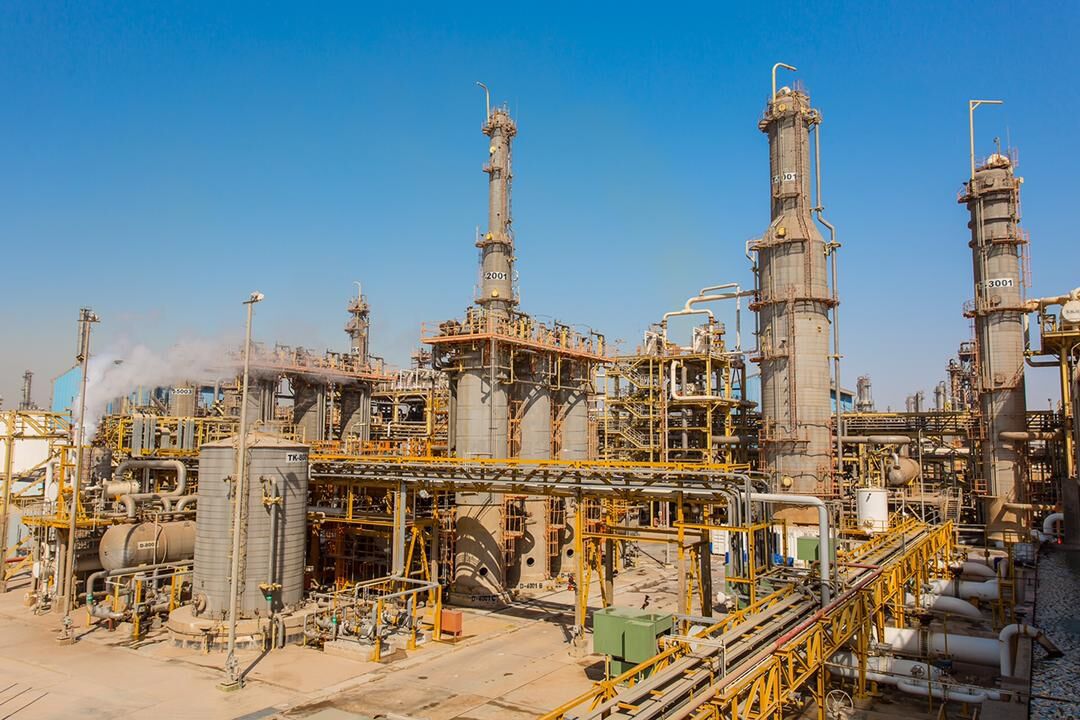Hassan Abbaszadeh, speaking at a ceremony for a lottery drawing as part of the campaign to reduce energy consumption by 10%, noted that Iran’s petrochemical production capacity currently exceeds 96 million tons, with about 23% of this capacity remaining unused despite $18 billion in investments in the sector.
He added that under the Seventh Development Plan (2024-28), the country’s petrochemical production capacity will reach 131 million tons, with significant growth expected as new projects come online.
The CEO of the National Petrochemical Company (NPC) stated that specialized committees have been formed to monitor and ensure the supply of feedstock for the petrochemical industry. A key initiative is facilitating the participation of petrochemical companies in the development of upstream fields.
Abbaszadeh highlighted the use of renewable energy in the petrochemical sector, noting that solar panel installations are being actively implemented.
The Kaveh Methanol Company is set to inaugurate one of its solar farms soon, with additional farms in Kerman, Yazd, Isfahan, and Khorasan nearing completion. Wind farms in Sistan and Baluchestan, with an initial capacity of about 500 megawatts of wind energy and 800 megawatts of solar energy, are also under construction.
He stressed that gas conservation helps meet the petrochemical industry’s gas needs, urging consumers to modify their behavior to free up more resources for industrial use.
The NPC CEO also detailed extensive efforts to collect flare gas, noting that several flares have been extinguished through investments by petrochemical holdings. A $1.1 billion investment in the Bid Boland Gas Refinery will extinguish 55 flares, saving approximately 17 million cubic meters of gas.
Abbaszadeh said 14 more flares will be extinguished by the end of the year, and the NGL3100 Dehloran project for associated petroleum gas gathering is nearing operation.
Under the Seventh Development Plan, companies investing in flare gas recovery will have priority, with petrochemical firms actively participating in field development and gas collection.
He emphasized the importance of optimizing gas consumption in households, greenhouses, and poultry farms, noting that studies show significant gas savings in these sectors can meet a substantial portion of industrial demand. Petrochemical companies are ready to contribute to these efforts.
Three leading provinces in energy reduction campaign
Ali Rabbani, head of the NPC’s Optimization Management, reported that Mazandaran, South Khorasan, and Isfahan provinces have shown the highest participation in the national campaign to reduce energy consumption by 10% in its first three weeks.
He noted that Iran, as the world’s second-largest gas reserve holder and third-largest gas producer, faces gas supply imbalances. Daily production has reached 860 million cubic meters, and with proper consumption management, both household heating needs and industrial feedstock can be met.
Rabbani highlighted inefficient energy consumption patterns, which have led to restrictions on gas supply to the petrochemical industry. Petrochemical companies face a 50 million cubic meter gas shortfall, reducing production, exports, and government revenue, while increasing unemployment.
He stated that the petrochemical industry’s total gas consumption is 90 million cubic meters, and the 50 million cubic meter shortfall costs the government and public approximately 10 billion tomans per month.
Rabbani urged all sectors to cooperate in optimizing energy consumption to ensure industries can operate without disruption.
He noted that some days, gas consumption in households, commercial sectors, and small industries exceeds 600 million cubic meters, reducing gas supply to power plants and increasing liquid fuel use.
Rabbani highlighted the 10% energy reduction campaign as one of 12 initiatives to address gas imbalances. The campaign, implemented without financial cost to the government or public, involves the National Gas Company, NPC, NGOs, knowledge-based companies, and academic experts. It promotes optimal consumption culture and addresses social and environmental issues through investments by gas-affected companies.
He mentioned social and individual rewards from the campaign, including wheelchairs for needy children, low-consumption heaters for the underprivileged, solar power plants for women-led workshops, reforestation of burned Zagros forests, and partial restoration of Anzali Wetlands, all achieved through public participation without additional costs.
Rabbani announced that 350 prizes, including heaters, grants for replacing heating systems, and motorhouse system upgrades, will be distributed among the top three provinces in the first round of the campaign lottery, with installations starting next week.
Weekly lotteries will continue for four weeks, with 8,000 prizes out of 10,000 awarded by the end of the Iranian calendar year to subscribers who achieve a 10% reduction in gas and electricity consumption.
He invited all subscribers to register for the campaign at nabzenergy.ir to participate and benefit from individual and social rewards, contributing to the preservation of intergenerational resources.


Your Comment